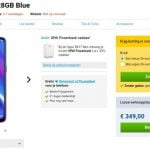
Naseeb, owner of Royal Interiors, a 6,000 sq.ft. three-storeyed furniture store in Mumbai’s Ghatkopar has already sold more than Rs 1 crore of goods online during this year’s festive season sale thanks to Amazon.
But, there has seen a consistent drop in customer walk-ins. Naseeb even believes that in the next three to five years he might have to shut the storefront. Royal Interiors is a seller only on Amazon, which accounts for 70% of his business, up from 30% a couple of years ago. “In my language, I call ecommerce bina bhare ki dukan (a shop where there is no rent),” he said. “I pay them commission only when I sell a product.”
He doesn’t mind reducing the prices to meet the discounting competition that ecommerce platforms are infamous for. “I sell more, at less margin, but I make more (net) profits,” he said.
What Naseeb doesn’t know is the world of ecommerce in India is aligning slowly yet surely in his favour. Ecommerce in India has been dominated by sales in mobile phones and fashion for the longest but that is changing – as evident during the first set of festival sales on Amazon and the Walmart-controlled Flipkart this year.
If estimates are to be believed from within the two Indian ecommerce leaders, non-mobile and non-fashion categories will contribute over 30% of overall ecommerce sales this festive season. (Festive season sales in India run from Durga Puja celebrations through Diwali to Christmas and the New Year.) This is seen as the first big broadbasing of ecommerce buying in India as buyers purchase a broader variety of products beyond mobile phones and fashion products and, as importantly, more people come online with a seachange in data consumption.

“Last year, non-mobile and non-fashion would have been in the range of 10% to 15%,” said Sateesh Meena, senior analyst at Forrester Research.
Royal Interiors is just one of the thousands of non-mobile and non-fashion product sellers who have listed their goods on Flipkart and Amazon, hoping to make a fortune. Why not? India’s ecommerce market is expected to cross $100 billion by 2022, out of which product retailing will be $62 billion, according to a report by consulting firm PwC and industry body Nasscom.
Consultancy KPMG estimates Amazon and Flipkart to hold more than 70% share of the ecommerce market by gross merchandise value (which excludes promotions and discounts), making it a two-horse race to the finish. The remaining 30% is divided among more than 70 other small and medium sized ecommerce companies.
Beyond mobile and fashion
Before the festival sales this season, market researcher Red Seer Consulting had estimated that ecommerce companies may grow their GMV sales up to double versus the same period the previous year. Flipkart ended up reporting an 80% expansion in the first leg of its festival sales.
Flipkart, which once had mobiles as its largest selling category, has seen almost half of its contribution coming from outside of mobiles and fashion. “Non-mobiles and non-fashion… collectively have contributed upwards of 50% to the sales so far,” said a Flipkart spokesperson in a mail.

It’s not that people are abandoning buying clothes and mobile online, except that a large number of people are becoming comfortable buying other products on the ecommerce platform. On an average, sales in most categories on Flipkart, the spokesperson said, have doubled over 2017.
For Amazon, the experience hasn’t been different. “Apart from witnessing the highest traction ever for categories like smartphones and fashion, categories like consumables that include daily essentials & beauty, large appliances, TVs, and home & kitchen have emerged popular this festive season,” said Manish Tiwary, vice-president of category management, Amazon India.
The home & kitchen category sales, for instance, grew five times over 2017. Sales in household cleaners, detergents and handwashes have grown 7x. Cookware and dining grew six-fold and furniture sales quadrupled.
Ringside players are witness to the change, as well. Swati Bhargava, co-founder of CashKaro, a cashback platform affiliated with several ecommerce companies including Flipkart and Amazon, said that non-mobile and non-fashion categories will contribute more than 30% of the overall GMV – doubling from the percentage share last year.
Consumables, health and beauty, large appliance, and grocery are the categories that Bhargava noted maximum growth. In consumables and grocery, especially, fast delivery services like Amazon Prime has encouraged growth, she said. Pay balance offers, too, have helped.
For CashKaro, which is the country’s largest cashback platform, sales are a fair representation of change the ecommerce industry is going through. “Compared to normal days, increase in orders in 400%,” Bhargava said. Cashbacks range from 1% to 35%, with the lowest ones on mobile phones and the highest on fashion and other niche categories.

While mobiles sales on ecommerce will continue to grow, its pace won’t keep up with other categories. An analyst said sales online of mobiles were far from saturation but increasing the share in overall sales was still a while away. “One in three phones is coming from online. To make it one out of two phones from online will take some time,” said Pavel Naiya, senior analyst at Counterpoint Technology Market Research.
Not just churan, anymore
The move to sell more than just phones and clothes started in 2016, when Amit Agarwal, head of Amazon India said that his company sold 50 different variety of churan and hing, marking a take off from traditional categories.
Things have changed a lot, since. “Amazon sold more than 1,000 grocery units every minute of every hour on Day1 (of the sale),” said Tiwary.
The trend is expected to continue. Beauty, toys and homeware will be the fastest growing in the next five years. According to Forrester, beauty and cosmetics will grow at a 46% compound annual growth rate between 2017 and 2022, toys at 39%, home decor and furniture at 23%, and grocery at 36%.
A large portion of the growth will come from existing buyers who will return more frequently to ecommerce platforms. For example, Meena said, “Toys will be something that you will buy more frequently than a smartphone, if you have kids at home.”
Another reason for the growth is many brands are going ecommmerce-only, as they cannot reach out to tier-2 and tier-3 buyers through traditional distribution channels. “The companies want to focus more on these categories as the ecommerce companies want a bigger wallet share of the customer,” Meena added.
One such example is Kabir Siddiq, founder and CEO of Mumbai-based Sleepycat, which manufactures mattresses and started selling on Amazon in August 2017. Last year during the festive season it sold 120 mattresses. This October, it sold 1,500 pieces (1,300 on Amazon) worth Rs 2.5 crore. Siddiq sees the entire country as his market. “FedEx and BlueDart realise how much volume is coming from ecommerce. Now they have a separate vertical and they provide different packages,” he said.

As more people start using the smartphone, Amazon and Flipkart will find new buyers. Amazon’s numbers show that during the festive season sale more than 82% new customers who shopped on were from smaller towns and cities. Interestingly, new customers through the Hindi website grew by 2.4 times over a normal business day during wave 1 of the Great Indian Festival, its biggest annual sale.
For Flipkart, the growth in other categories came from efforts in building the right mix of selection for this portfolio including exclusives and private labels. Of course, the discounts helped. “A lot of initiatives were taken on the marketing, merchandising and on the supply-chain front round the year to build consideration for these categories and grow the consumer base,” the company spokesperson said.
In the months and years to come, this festive season will likely set a new standard in Indian ecommerce where buyers will visit more often and purchase wider variety of products. “The festive season has given a huge impetus to these categories and they would have a good baseline shift especially after the big sale events,” the Flipkart spokesperson said.
[“source=TimeOFIndia”]




